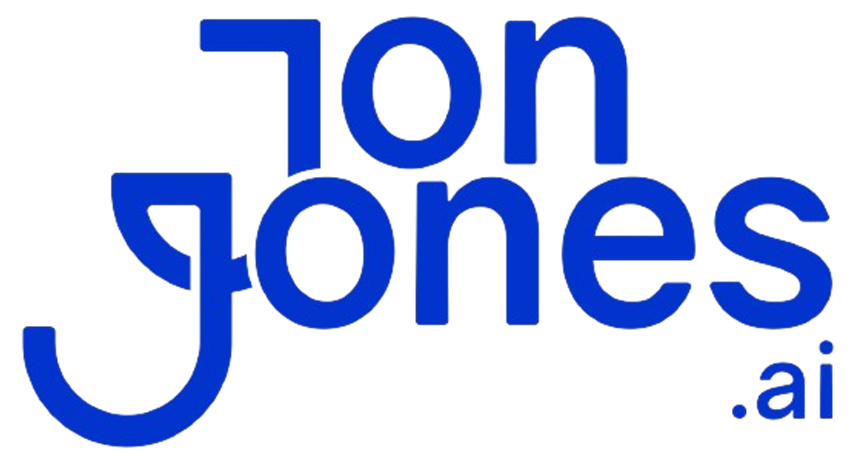Ever feel stuck because your slow, manual market research is making you miss deals?
Picture this: you drop in social posts, patent filings, and earnings reports, and a tool churns out clear insights. It’s your own round-the-clock research partner (software that never sleeps). AI for industry analysis done and used right can make the difference!
In this article, we’ll show you seven AI (artificial intelligence) methods that uncover fresh trends, benchmark competitors on the fly, and predict market shifts you can count on. By the end, you’ll see how these tools fuel your strategy and let you skip the guesswork.
AI-Powered Industry Analysis: Market Trends, Competitive Intelligence & Forecasting

We’ll use AI (artificial intelligence) to transform how you research your industry. By feeding huge data sets into our system, we spot fresh trends, benchmark your competitors in real time, and forecast upcoming market shifts. That means you get reliable insights in minutes, not weeks.
Next, our trend-spotting AI scans social media posts, patent filings, financial reports, and news feeds to detect demand spikes before they hit the mainstream. Unsupervised algorithms (machine-learning methods that group data without labels) cluster millions of records to uncover product innovations and service gaps in niche markets, while filtering out noise. No more guessing, just real signals.
Then, our real-time benchmarking dashboards keep tabs on price changes, product launches, and marketing campaigns, alerting you to shifts so you can tweak your strategy on the fly. You compare rivals against custom KPIs like share of voice or feature frequency. When a competitor rolls out a new feature, your team can copy or differentiate in days, not weeks.
Finally, predictive algorithms (tools that forecast outcomes based on past data) map where your market is headed by analyzing historical sales, seasonality, and customer sentiment, using time-series methods (techniques that chart data over time) and regression models (stats tools that link variables) to turn raw numbers into forecasts you can trust. These projections power your inventory planning, budget setting, and product rollouts months in advance.
Smart planning, done.
Machine Learning & Predictive Analytics Models for Industry Data Science

We’ve already nailed the basics, regression (predicting numbers), clustering (grouping similar data), and forecasting (guessing future trends). Now, let’s talk about two advanced features that really move the needle.
Classification (sorting items into categories) helps you score leads and flag risky products. We give each lead a 0–100 score based on past conversions. One client saw qualified opportunities jump 30% in just one month.
Deep learning (an AI technique that learns complex patterns) and text mining (pulling insights from words) uncover hidden trends and subtle shifts in customer sentiment. For example, a neural network parsed 50,000 support tickets and spotted a pricing pain point before churn spiked.
Building a Robust Data Pipeline: Ingestion, Preprocessing & Feature Engineering

Good industry analysis needs solid data ingestion. We gather structured records from ERP (Enterprise Resource Planning) systems, CRM (Customer Relationship Management) databases, and CSV exports. We also tap into unstructured streams like sensor feeds, log files, and third-party API responses.
ETL (extract, transform, load) tasks move that raw data into a central data warehouse (a system that stores all your data). We often use workflow automation tools to schedule jobs, handle failures, and track data lineage in your pipelines.
When data lands in the staging area, we clean and standardize every field. We run scripts to remove duplicates, normalize dates and product codes, and fill gaps with simple methods like mean imputation (using the average) or defaults based on your business rules. This cleanup makes sure our AI models (predictive model, an algorithm that forecasts outcomes) won’t choke on bad records or wild outliers.
Next, we turn those clean tables into insights with feature engineering (finding the right signals for AI). We might calculate rolling averages on sensor data to spot equipment wear. We encode categories into numeric flags for classification and build interaction terms, like price times feature count, to boost predictive power.
Thoughtful feature engineering gives your AI models the right signals, so forecasts, customer segments, and anomaly detection all run on solid ground. Nice.
Top AI Analytics Tools & Platforms for Industry Monitoring

We’ve lined up nine top AI analytics tools (artificial intelligence systems) to help you spot industry trends, keep tabs on competitors, and dig into what customers are saying. Each platform brings its own set of features and pricing, so you can pick the one that fits your needs and budget.
| Tool | Primary Function | Pricing |
|---|---|---|
| Exploding Topics | Daily trend updates | Free; $39/year Pro |
| Gong | Call transcription & summary | Custom quote |
| Speak | Media insights via NLP (natural language processing) | $29/month; $278.40/year |
| SurveyMonkey Genius | AI survey creation & sentiment analysis | Free within SurveyMonkey |
| Poll The People | ChatGPT-driven polling (conversational AI model) | $1/response; $50/month |
| Remesh | AI focus group analytics | Custom pricing |
| Lexalytics | Text analytics for regulated industries | Custom quote |
| Claude | Conversational AI summarization | Free tier; $20/month Pro |
| YouScan | Image & sentiment analytics | From $299/month |
Addressing Challenges & Ensuring Ethical, Scalable AI in Industry Analysis

AI can speed up industry insights, but it brings risks you can’t ignore. Let’s lay out a plan that keeps your results trustworthy, your governance clear, and your growth smooth.
- Odd AI outputs: add human review checkpoints to flag weird or implausible results before they reach decision-makers.
- Messy data: set up ongoing cleaning and validation routines to catch missing values, duplicates, and odd formats.
- Privacy and compliance: use privacy-by-design (building privacy in from the start) and run regular audits to stick to data rules.
- Governance and ethics gaps: create AI policies and oversight teams that spell out fair use, accountability, and transparency.
- Scaling slowdowns: tap cloud-based and edge analytics (processing data closer to where it lives) so performance keeps up with more data.
- Team pushback: keep everyone in the loop with clear updates, hands-on training, and live demos of AI’s real impact.
With these steps, your AI projects stay on track and win team buy-in. Then, to make sure governance, compliance, and scaling align with your big-picture goals, let’s partner on ai strategy consulting.
Measuring Impact: KPIs, ROI & Case Studies for AI in Industry Analysis

Measuring how AI changes your business starts with key performance indicators (KPIs) – simple metrics that show success. When we pick the right KPIs, you see clear wins and know where to tweak. It’s like choosing the right gauges on your car dashboard.
We track customer segmentation accuracy to see how well AI groups your audience. Segmentation analytics (analysis of audience groups) might show a 90% match with manual clusters. That means you spend less time guessing and more time reaching the right people.
Forecasting accuracy comes next. We use a predictive model (an algorithm that forecasts outcomes) and measure its mean absolute percentage error (MAPE) – the average percent difference between our forecast and what really happens. A low MAPE tells us your demand forecasts are on point.
Then we add a real-time analytics dashboard (live metrics at a glance). This dashboard lights up with sales and sentiment data the moment it updates. So you spot shifts fast and react before your coffee gets cold. Nice.
We also look at cost reduction. Compare manual hours saved to AI-driven processing time and watch your team get hours back. And performance optimization shows up in faster campaign turnarounds and higher return for each marketing dollar you spend.
Now, let’s look at real wins:
- Spotify’s AI DJ feature uses a continuous feedback loop to tune playlists in real time. It lifted listening time and nudged up subscription rates – a win for engagement forecasting (predicting trends).
- Scios Market’s CFO used AI insights to overhaul content recommendations. Show ratings jumped 42% and ad rates doubled in weeks. That’s performance optimization in action.
- A Middle Eastern bank rolled out AI-driven offers. In three months, cardholder spending jumped $3.4 million. Travel transactions grew 60%, premium card sign-ups rose 30%, and daily spend climbed 15%. Proof that personalized AI can cut waste and boost growth.
Plus, 47% of customers now prefer personalized marketing. So the ROI on these AI projects is clear: more engagement, less waste, and smarter budget moves.
Final Words
We dove into how AI-powered industry analysis speeds up trend-spotting, competitor benchmarking and forecasting with predictive algorithms (see ML models section for more).
We unpacked core machine learning approaches and the steps to build a reliable data pipeline.
We compared top analytics tools, tackled real-world challenges and saw key KPIs with solid case studies.
With these practical steps and a focus on ethics, you’re ready to tap into AI for industry analysis and drive growth with confidence.
FAQ
Can AI do a market analysis?
AI can do a market analysis by ingesting large datasets, spotting emerging trends and benchmarking competitors in real time, helping you make faster, data-driven decisions without manual research.
How is AI used in industry and business analysis?
AI is used in industry and business analysis for automating data cleaning, segmenting customers, forecasting demand with predictive algorithms and summarizing text-based reports through NLP, freeing teams from tedious manual tasks.
What is the best AI tool for market analysis, including free options?
The best AI tools for market analysis include paid platforms like Gong for call insights, alongside free options such as Exploding Topics for trend updates, SurveyMonkey Genius for sentiment analysis and Claude’s free tier for data summarization.
Which companies offer AI market research services?
AI market research companies include Remesh for real-time focus group analytics, Lexalytics for regulated-industry text analysis, Poll The People for ChatGPT-powered polling and YouScan for social media image and sentiment monitoring.
Are there free AI tools or PDFs for industry analysis?
Free AI tools for industry analysis include Exploding Topics, SurveyMonkey Genius and Claude’s free tier. You can also download AI industry analysis PDFs from consulting firms and research sites like McKinsey.
What is the generative AI market size according to McKinsey?
McKinsey estimates the generative AI market could add $2.6 to $4.4 trillion in annual value by boosting productivity across several sectors and reshaping workflows.






